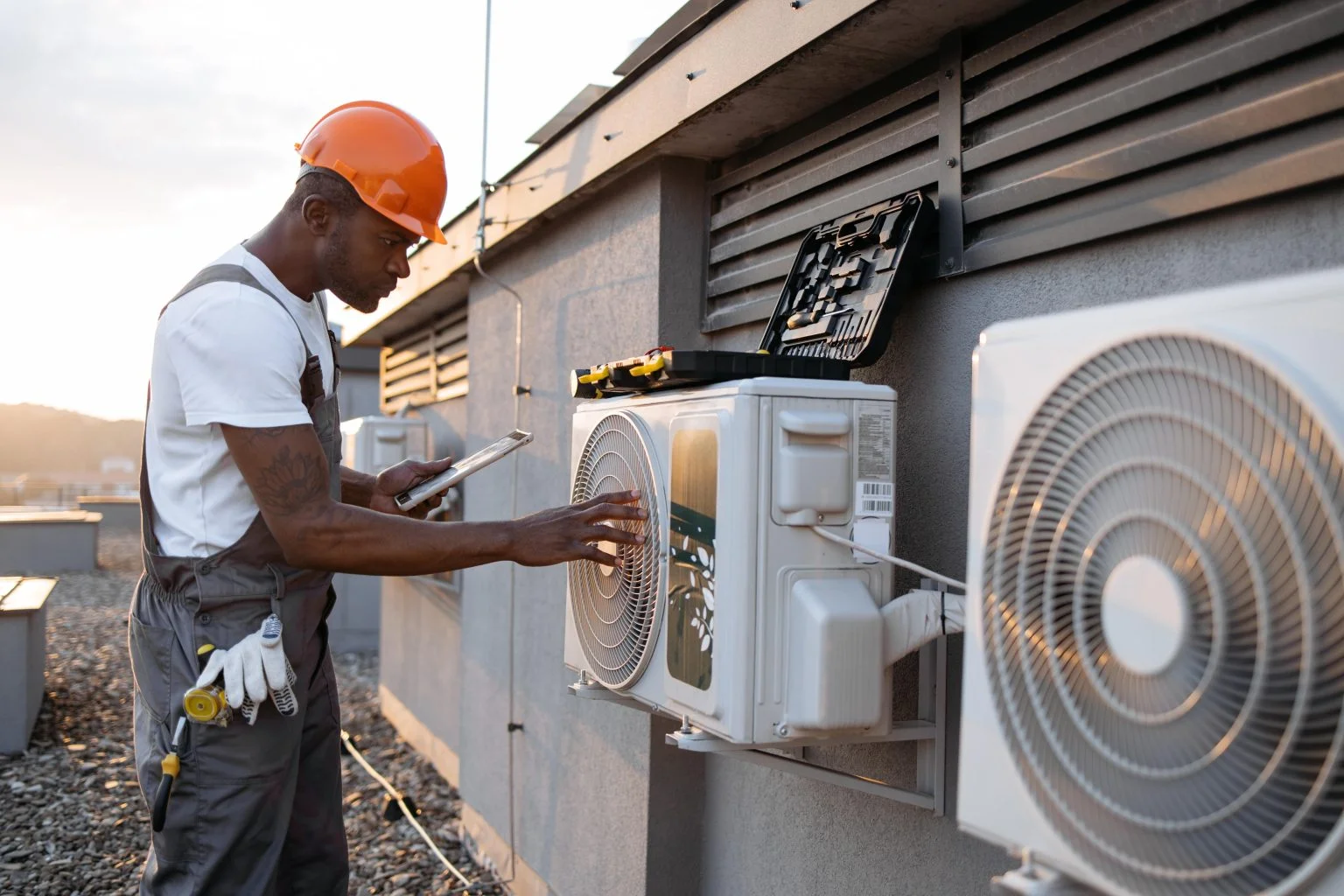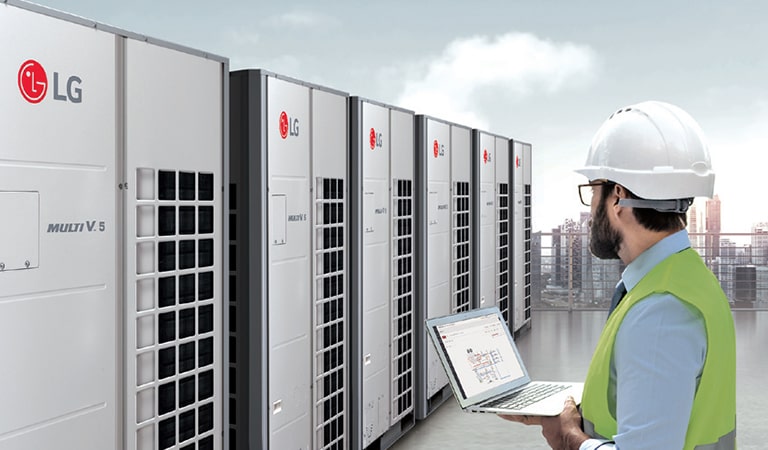Choosing the Right Time for furnace replacement
Choosing the Right Time for furnace replacement
Blog Article
How a Heatpump and Heating System Job Together to Maximize Your Home's Heating Performance
Understanding just how a heat pump and heating system collaborate is vital for homeowners looking for reliable heating options. Each system has its strengths, giving a balanced technique to home convenience. The heat pump excels in modest temperatures, while the furnace delivers quick heat throughout severe cold. This harmony not just decreases energy expenses yet additionally enhances the life-span of both home appliances. What elements affect this partnership, and how can homeowners maximize their benefits?
Recognizing Warmth Pumps: Just How They Function
Although lots of people might be not familiar with their inner operations, heatpump play a crucial duty in modern heating unit. These tools run by moving heat from one location to an additional, making use of the principles of thermodynamics. In chillier months, a heatpump removes warm from the outside air, ground, or water, and transfers it inside your home to heat the living area. Alternatively, throughout warmer months, it can turn around the procedure, functioning as an a/c by getting rid of heat from inside to the outside.Heat pumps contain an evaporator, expansion, condenser, and compressor shutoff. The refrigerant within the system takes in warm as it vaporizes at low temperatures and stress. The compressor after that enhances the stress and temperature level of the cooling agent, enabling it to launch warm as it condenses. This efficient process can greatly decrease energy intake contrasted to typical home heating approaches, making warm pumps a lasting selection for climate control in homes.
The Role of Furnaces in Home Home Heating
Heating systems play a crucial duty in home heating by offering a reliable resource of heat during the colder months. They operate by creating warm through combustion or electrical resistance, dispersing it throughout the home through air ducts or radiant systems. The effectiveness of a furnace is typically determined by its Annual Gas Use Efficiency (AFUE) score, which suggests exactly how properly the system transforms gas into heat.Furnaces can utilize numerous energy sources, consisting of gas, oil, propane, or electricity, permitting property owners to choose the most appropriate option for their demands. Unlike heatpump, which may struggle in severe cold, furnaces preserve constant efficiency, ensuring that indoor temperatures remain comfy no matter outdoor problems. Furthermore, contemporary furnaces commonly come equipped with sophisticated modern technology, such as clever thermostats and variable-speed blowers, boosting their efficiency and responsiveness. This versatility makes heating systems a critical part in all-encompassing home heating strategies.

Advantages of Making Use Of Both Systems With Each Other
Integrating the strengths of both heaters and warm pumps can cause an extra effective and reliable home heating service. Utilizing both systems allows homeowners to make the most of the heat pump's energy efficiency during milder temperature levels while counting on the heating system for even more extreme cold conditions. This double method can substantially decrease power costs, as heat pumps eat much less power than standard home heating approaches when temperatures are moderate.Additionally, making use of both systems with each other can boost comfort levels in the home. Warm pumps can provide consistent, even home heating, while heaters can rapidly raise ambient temperature levels when needed. The combination of both systems can prolong the life-span of devices by lowering wear and tear on each unit, as they share the work. Ultimately, property owners can take pleasure in a balanced, affordable home heating solution that changes effortlessly to differing weather condition problems, ensuring a cozy and inviting home throughout the cold weather.
How Heat Pumps and Furnaces Enhance Each Various Other
When homeowners incorporate heatpump and furnaces, they create a corresponding furnace that takes full advantage of performance and convenience. Heatpump operate by transferring warmth from the outside air or ground, making them very effective in modest environments. They excel during milder temperatures, offering economical heating. Conversely, furnaces create warm via burning or electric resistance, delivering solid, instant heat during extreme chilly conditions.The mix of these two systems permits for vibrant changes based on temperature changes. During warmer months or milder wintertime days, the heatpump can take the lead, preserving energy and lowering costs. As temperatures drop, the heater can effortlessly engage, making sure consistent heat throughout the home. This harmony not just enhances energy usage yet additionally improves the life-span of both systems, as each system operates within its perfect performance variety. With each other, they produce a balanced setting that adjusts to varying environment needs.
Enhancing Effectiveness: Tips for Homeowners
House owners can enhance their heating performance through numerous practical techniques. Establishing a regular upkeep routine, incorporating clever thermostat technology, and implementing effective insulation and sealing options are essential steps. These procedures not only enhance convenience yet also decrease power expenses.
Routine Maintenance Set Up
To ensure maximum heating efficiency, establishing a regular maintenance routine is important for any kind of home. Property owners must prioritize regular assessments of both heatpump and heaters to determine Going Here peak efficiency. This consists of transforming air filters every one to three months, as clogged filters can considerably lower effectiveness. Additionally, scheduling professional upkeep a minimum of once a year allows technicians to determine and resolve possible concerns before they escalate. Home owners need to additionally cleanse the warmth pump's exterior device to stop particles build-up that can impede air flow. By adhering to a regular maintenance schedule, homeowners not just improve their heating unit' effectiveness however also expand their life-span, leading to greater convenience and decreased energy costs throughout the colder months.
Smart Thermostat Integration
Integrating a clever thermostat right into a home heating system can greatly boost power performance, particularly as it enables exact control over temperature setups. These devices can discover the home owner's routine and choices, automatically changing the temperature to maximize convenience while decreasing power use. They can lower home heating throughout times when the home is unoccupied, lowering unnecessary consumption. Numerous clever thermostats likewise give real-time power usage data, enabling homeowners to make enlightened choices regarding their home heating practices. Furthermore, remote gain access to using smart device applications enables individuals to change setups from anywhere, making certain the home is warm upon return. Overall, clever thermostat assimilation not only boosts convenience yet substantially adds to power cost savings and performance.
Insulation and Sealing Solutions
Smart thermostats play a critical function in energy efficiency, but their efficiency can be significantly enhanced by appropriate insulation and sealing services. Property owners must focus on protecting walls, floors, and attics to decrease warm loss. Top quality insulation products, such as spray foam or fiberglass, can substantially boost thermal resistance. In addition, securing voids around doors, air ducts, and home windows stops cool air seepage and warm getaway. Weatherstripping and caulking work approaches for dealing with these leakages - heat pump service. Normal inspections for air leaks, together with using blower door examinations, can aid recognize trouble locations. By buying insulation and securing, house owners can maximize the performance of their heating systems, inevitably causing reduced energy usage and lower energy expenses
Usual Myths About Warmth Pumps and Furnaces
What misunderstandings surround heatpump and furnaces? Several people erroneously believe that warm pumps are inefficient in chillier environments. In truth, contemporary heatpump are made to run successfully also in low temperatures, providing trusted heating throughout winter season. One more common myth is that heaters are constantly extra efficient than warm pumps. Nonetheless, this relies on the particular power sources and basics effectiveness ratings of the devices in inquiry. Some might also assume that making use of both systems simultaneously is unnecessary, however in fact, this combination can maximize heating effectiveness, particularly throughout extreme climate condition. In addition, individuals typically assume that heatpump call for constant upkeep, when in truth, they have comparable maintenance needs to conventional heating unit. By disproving these misconceptions, homeowners can make even more informed choices regarding their home heating alternatives, eventually leading to boosted convenience and energy efficiency in their homes.
Upkeep Considerations for Combined Equipments

Regularly Asked Questions
Can Warmth Pumps Work Successfully in Extremely Cold Climates?
Heat pumps can battle in incredibly cool environments because of minimized performance and warm removal limitations. Advancements in innovation have led to versions created for much better performance in such conditions, enhancing their feasibility in rough atmospheres.
The Length Of Time Do Warm Pumps and Furnaces Commonly Last?
Warmth pumps normally last 15 to two decades, while heating systems have a lifespan of 15 to three decades. Routine upkeep can expand their durability, making certain efficient procedure and lowering the requirement for premature replacements.

What Is the Typical Cost of Installing Both Equipments?
The typical expense of setting up both a heatpump and a heater usually ranges between $5,000 to $10,000 - ductless mini splits. Factors affecting this price consist of system dimension, setup complexity, and regional labor prices
Exist Tax Rewards for Using Energy-Efficient Home Heating Equipments?
Several house owners ask about tax obligation incentives for energy-efficient heating unit. Various government and state programs commonly provide rebates or credit ratings, motivating the fostering of sustainable technologies to minimize energy usage and promote environmental obligation.
How Do I Select the Right Size Heatpump and Furnace?
Picking the right size heatpump and heater includes computing the home's square video, taking into consideration insulation top quality, and reviewing neighborhood environment. Consulting an expert can assure suitable system efficiency and energy performance based on details requirements. heat pump installation ooltewah tn. Recognizing just how a warmth pump and heating system job with each other is crucial for homeowners seeking efficient home heating options. In chillier months, a warm pump extracts warm from the outdoors air, ground, or water, and transfers it indoors to warm up the living room. When house owners incorporate warmth pumps and furnaces, they produce a complementary home heating system that makes best use of effectiveness and convenience. Heat pumps operate by transferring warmth from the outdoors air or ground, making them extremely efficient in moderate climates. Heat pumps can have a hard time in very cold climates due to minimized effectiveness and warm extraction restrictions
Report this page